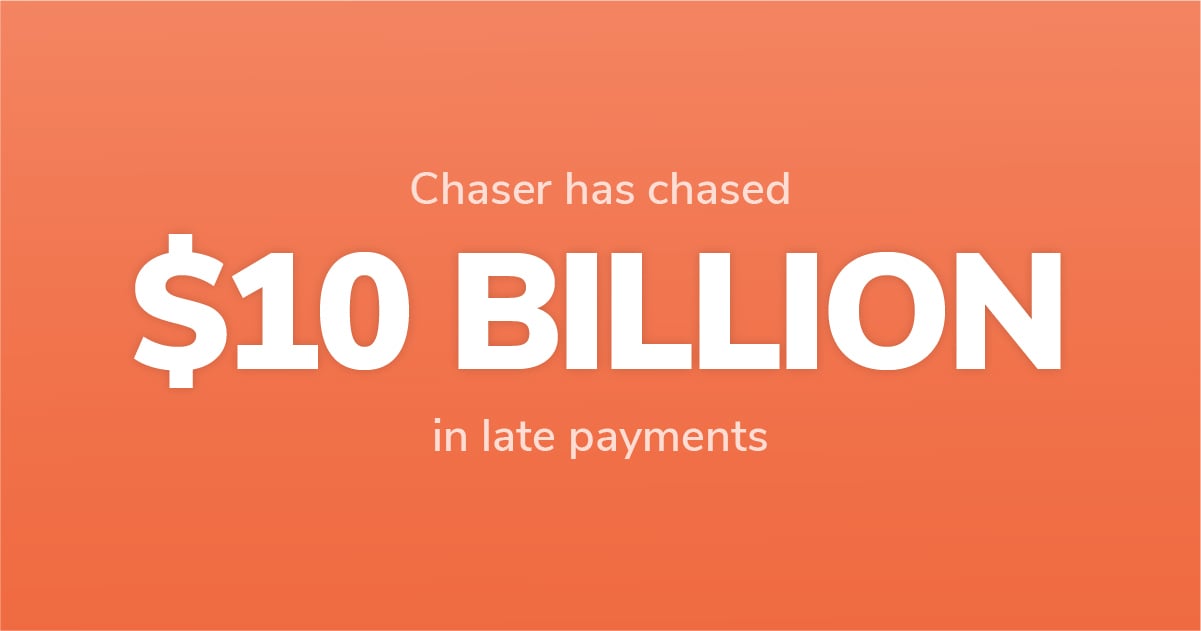The ability to negotiate accounts receivable is critical for the survival and prosperity of your business. Your negotiation skills can make the difference between a healthy cash flow and the debilitating effects of late payments. If you’re wondering how significant this issue is, consider that in the UK, 50,000 small businesses are forced to close each year due to late payments.
Accounts receivable can represent a significant portion of your assets, so how you manage them can profoundly impact your company's financial health. It's not just about recovering what's owed; it's about fostering respectful, professional relationships with your clients, including the difficult ones.
Each client interaction presents an opportunity to strengthen your business’s financial foundation while reinforcing positive client relationships. So, how do you navigate these waters with confidence and competence? Read on as we explore effective negotiation strategies for accounts receivable.
Accounts receivable negotiations aren't just about recovering debts; they're about nurturing respectful client relationships amid financial transactions.
Master your payment term negotiations
Before starting the accounts receivable negotiations, you should understand the significance of favorable payment terms. These terms are essential for maintaining a healthy cash flow in your business. They form a part of the contractual agreement with your customers, outlining how and when you expect to be paid for your goods or services.
These terms are pivotal in ensuring faster payments and reducing the risk of financial strain caused by late payments. When you set clear, concise, and reasonable payment terms, you create a framework that supports both your financial stability and customer relationships. Clear, fair payment terms reflect professionalism and can help build trust with clients since they understand what is expected.
Strategies for negotiating mutually beneficial payment terms
Here are some strategies you can use to negotiate and ensure the financial health of your business while maintaining strong customer relationships:
Know your client's payment cycle: Before entering negotiations, understand your client's payment process. Some companies may have fixed payment cycles, and aligning your terms accordingly can facilitate smoother transactions.
Offer different payment options: Offering a range of payment options can increase the likelihood of on-time payments. This flexibility can be particularly advantageous for businesses with a diverse customer base.
Be flexible with the payment dates: Present multiple payment duration options. For instance, you could offer a standard net 30-day term while also providing an incentive for early payment, such as a discount for payment within 15 days.
Emphasize the consequences of late payments: Reminding customers of the penalties for late payments can incentivize timely payments. Clearly state the repercussions of late or non-payment, such as the involvement of a debt collection agency.
Be prepared to compromise: While aiming for the best terms for your business is important, be ready to negotiate and find a middle ground that satisfies both parties.
Communicate value: Clearly articulate the value of your products or services and how favorable payment terms benefit both parties. This clarity can incentivize them to agree to your terms, recognizing the mutual benefits.
Leverage positive relationships: If you have a good history with a client, leverage this relationship during negotiations. Clients who value your services are more likely to agree to terms that are favorable to you.
One notable case study of effective negotiation is Docuflow. This company was struggling with late payments that were hampering its business growth and straining client relationships due to repetitive manual chasing. The introduction of Chaser's accounts receivable platform marked a significant turning point by creating an opportunity for successful negotiation.
When accounts fell into arrears, the system's faster response rate improved communication with customers behind on their payments, and made all payment data instantly available to Docuflow’s team when handling payment chasing phone calls. This enabled Docuflow to engage in negotiations more promptly and effectively. Successful negotiations combined with other capabilities of Chaser’s software resulted in a remarkable improvement in payment times, with invoices settled 54 or more days faster on average.
How to handle difficult customers
In the realm of accounts receivable, encountering difficult customers is an inevitable challenge. Handling these situations with professionalism and tact is crucial for maintaining good client relationships and ensuring effective negotiation outcomes. Some challenges you are likely to face in dealing with difficult clients include:
Delayed payments: Customers who consistently delay payments can significantly disrupt cash flow and resource allocation. This habitual tardiness often requires additional effort and resources to follow up and secure payments.
Unrealistic expectations: Some clients may have expectations that are not aligned with their contractual agreements or industry standards, leading to disputes and strained relations.
Poor communication: Difficult customers may be unresponsive or unclear in their communication, making it hard to resolve issues and reach mutually beneficial agreements.
Aggressive or uncooperative behavior: Encounters with customers who are aggressive, disrespectful, or uncooperative can be particularly challenging, impacting morale and the efficiency of the negotiation process. To protect your customer relationships, Chaser recommends bringing in a specialist debt collector in this instance.
Disputes over services or invoices: Disagreements regarding the quality of services or the accuracy of invoices can arise, complicating payment processes. See how to mitigate key reasons for disputes and queries.
In these challenging situations, you can use the following techniques to maintain professionalism:
- Stay calm and composed
- Practice active listening
- Maintain clear and assertive communication
- Seek win-win solutions
- Use empathy tactfully
- Know when to escalate to external professionals
Customer rapport and communication
Effective communication and rapport building smooth the path for negotiations and lay the foundation for long-term, mutually beneficial relationships with clients. Effective communication is the bedrock of successful negotiation. It's about more than just exchanging information; it's about understanding the emotions and intentions behind the information.
Clear and effective communication clarifies expectations, fosters trust, and avoids misunderstandings that can lead to disputes. Communicating effectively is even more crucial in accounts receivable, where discussions often revolve around sensitive financial matters.
Building rapport with clients involves creating a connection that facilitates easier, more open discussions. A good rapport makes clients more receptive to your messages and suggestions, easing the negotiation process. This connection can be built over time through consistent and positive interactions.
Here are some communication strategies that can help you foster a positive negotiation environment:
- Active listening
- Be clear and concise
- Use positive language
- Demonstrate empathy and understanding:
- Ensure consistent follow-ups
- Ask open-ended questions to encourage dialogue
Leverage data and insights
Negotiating based on data and insights adds a significant edge to your strategy. Utilizing data means going beyond mere numbers; it's about interpreting these numbers to gain meaningful insights into your clients' payment patterns, preferences, and potential challenges.
For instance, when you analyze historical data on payment timelines, you can identify which clients consistently pay late, or view AI-generated Payer ratings summarising payer behavior in Chaser. This insight allows you to segment and tailor your approach when negotiating terms with them, perhaps by proposing different payment structures or incorporating incentives for timely payments.
Integrating data-driven insights into your negotiation strategy can transform how you interact with clients. For example, understanding a client’s business cycles and financial ebbs and flows can lead to more empathetic and effective communication.
Furthermore, data analysis can uncover broader trends affecting your client base, such as seasonal fluctuations in payment behaviors or industry-specific financial challenges. Armed with this knowledge, you can anticipate and prepare for periods of slower cash flow, negotiating terms in advance that will help mitigate these predictable downturns.
Adapt to different negotiation styles
Recognizing and adjusting to various client approaches enhances the likelihood of reaching favorable outcomes. Some clients prefer direct and fast-paced negotiations, while others lean towards a more collaborative and detailed discussion. Identifying these styles allows for a tailored approach that resonates with each client.
Strategies for adapting to different preferences include active listening to gauge a client's approach, asking targeted questions to understand their priorities, and mirroring their communication style to establish rapport. For instance, with a client who values brevity and clarity, focus on concise communication and straightforward terms. Conversely, provide comprehensive explanations and data-backed proposals for clients who prefer a detailed analysis.
You should be open to different methods of communication or payment solutions and be willing to adjust your strategy as the negotiation progresses. By being versatile in your approach, you can more effectively navigate the diverse landscape of client preferences, leading to successful and mutually beneficial agreements.
Overcome common negotiation challenges
Negotiating accounts receivable can be a challenging aspect of managing a business. Here are some common hurdles you might encounter:
Communication barriers: Effective communication is crucial. You may have difficulty reaching the right person for negotiation, or there might be misunderstandings due to poor communication channels.
Disagreements on terms: Disputes over payment terms, such as the due date or the amount owed, are common.
Legal and contractual issues: Contracts and legalities can complicate negotiations. Some clauses might limit your ability to negotiate, or legal proceedings may be necessary if the debtor fails to comply with the agreed terms.
Internal process inefficiencies: Your internal processes for managing accounts receivable might be inefficient, leading to delays in invoicing or follow-ups.
Cultural differences: If you are dealing with international clients, cultural differences in business practices and communication styles can create unexpected negotiation challenges.
Maintaining relationships: Balancing firmness in collecting dues while maintaining a positive relationship with clients is a delicate task. You need to assert your rights without damaging future business opportunities.
Lack of negotiation skills: Effective negotiation is a skill. Without it, you might find it difficult to persuade debtors to pay, potentially leading to reduced cash flow for your business.
Here are solutions and preventive measures you can implement to address the challenges in accounts receivable negotiations:
- Establish clear, open lines of communication with your clients
- Set clear payment terms
- Offer flexible payment options
- Ensure your contracts are legally sound and enforceable
- Streamline your invoicing and follow-up procedures
- Educate yourself and your team on cultural differences in business practices
- Be assertive yet respectful in your collections approach
- Develop negotiation skills
- Stay informed about economic conditions that may impact your clients' ability to pay
- Leverage technology for better management of accounts receivable
Accounts receivables negotiation made easy
Mastering negotiation in accounts receivable is a valuable skill to help your business maintain a healthy cash flow and build resilient client relationships. From setting clear, concise payment terms to handling challenging client interactions professionally, each aspect plays a crucial role in your business's financial health. Embracing continuous skill development and applying these strategies in real-world scenarios will significantly enhance your negotiation effectiveness.
Utilizing tools like Chaser's accounts receivable software can revolutionize your negotiation approach by simplifying, automating, and humanizing the process of managing unpaid invoices, and summarising all client payment data and insights in one concise location. Additionally, Chaser’s accounts receivable specialists can negotiate on your behalf, efficiently clearing any backlog of outstanding invoices. Speak to an expert at Chaser today and learn how we can help you secure your business's financial health.




